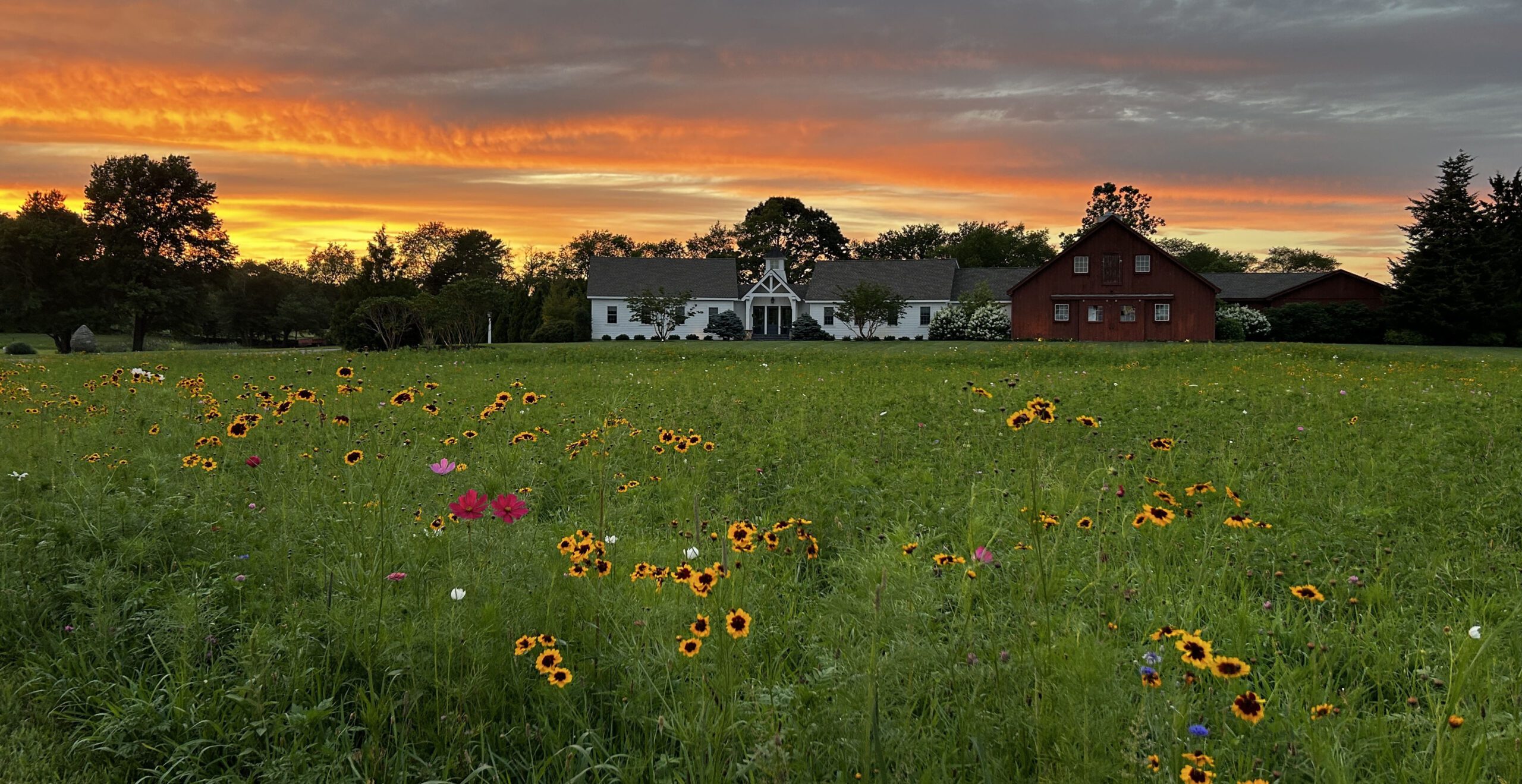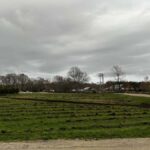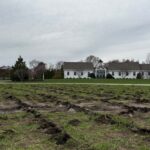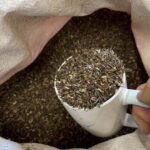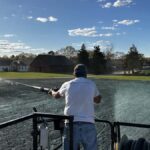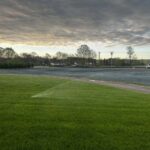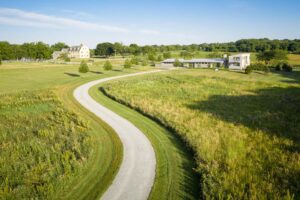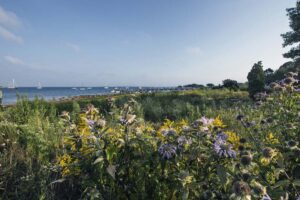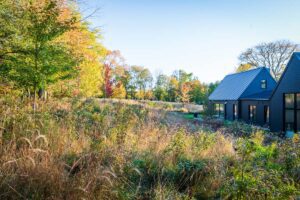
22 Aug Creating a Dream Wedding Meadow: A Case Study
Jon and Rochelle Zeyl, co-owners of our firm, were delighted at their daughter’s vision of marrying in a picturesque setting – our barn surrounded by vibrant wildflowers. This outlines their journey to transform the Landscape Creations’ property and highlights the basic how-tos of creating an enchanting, budget-friendly meadow.
Step 1: Site Assessment
Before installing a meadow, it’s essential to assess the site’s characteristics, such as soil type, sunlight exposure, moisture levels, and drainage. In our case, we took the opportunity to enhance drainage to improve germination and function.
Step 2: Preparing the Unplanted Ground
Next, our team relieved ground compaction with a tractor attachment, scarifying the soil deeply for effective water movement and healthy plant growth. This soil preparation is a crucial component of establishing a meadow.
Step 3: Seeding or Planting
Meadows can be established from seed or by planting. We chose to seed because it is more cost-effective, but this approach required careful preparation of the soil, removal of existing vegetation, and proper timing and technique for hydroseeding.
Step 4: Plant Selection
To meet our objectives, we used a mix of annual wildflowers with perennials that will shine later in the process. We are also planting a nurse crop of fast-growing sheep fescue (Festuca ovina) and Little Bluestem (Schizachyrium) to establish ground cover for erosion control.
Step 5: Water, Assess, and Adjust
Watering is optional, but it could increase the speed of germination and establishment of our sheep fescue cover crop. Given the wedding timeline, our team will likely water 3-4 times this summer. We do have the equipment! It’s important to avoid overwatering. These plants thrive in low fertility soils. Finally, and only if needed, we will be ready to plant additional juvenile plants to achieve the look we want in time for the wedding.
The Final Touch: Ongoing Care
We will tall mow our meadow (never below 6 inches) 1x per year in late winter or early spring. This generally allows the animals that have nested over the winter appropriate time to have moved on, distributes seed, and prevents woody plants like juniper trees from growing so that we can keep our field to flowers and grasses. Best practice is to leave the clippings on the field.
A Longer-term Look
This project showcases the simplicity and affordability of small-scale meadows, planted from seed, as an eco-friendly landscaping alternative. It highlights that while meadows generally require less maintenance than traditional lawns, they still demand careful attention, especially in the establishment phase.
With this approach, the Zeyl family is fast on track to make their daughter’s wedding a vibrant, flower-filled dream. And, with proper care and maintenance, the wildflower meadow will continue to enchant and captivate, providing a tapestry of colors, textures, and fragrances, to be enjoyed for years to come.
Landscape Creations is excited to help further the trend towards low water usage and native plant renewal in the environment. Below are more meadow projects that we’ve completed on behalf of our clients and landscape architect partners.
